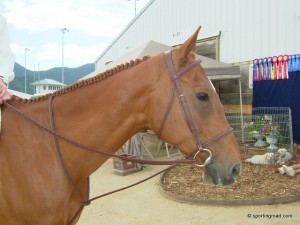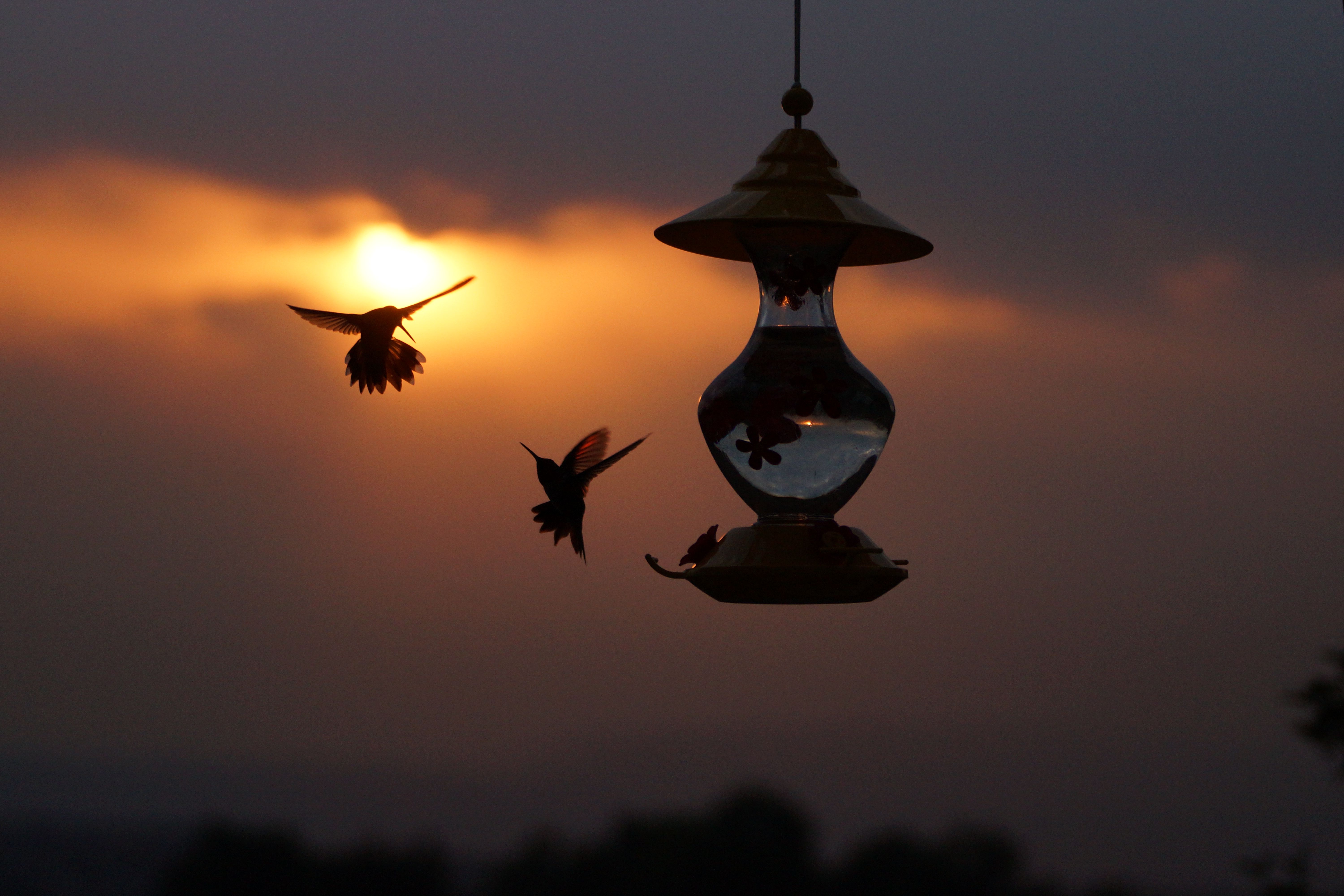Aztec warriors believed that if they died in battle, they would be reincarnated as hummingbirds. Only Aztec royalty and
religious leaders were allowed to wear hummingbird feathers. The Aztec’s would decorate their kings with cloaks made e ntirely of hummingbird skins.
ntirely of hummingbird skins.
One of these cloaks found its way to Rome and was given as a gift to the Pope. Soon after, there was a large market in Europe for hummingbird skins causing hundreds of thousands of hummingbirds to be killed across South America. These skins were shipped across Europe where they were purchased to make artificial flower, ornaments, dust catchers, and the feathers were used in decorations and jewelry.
Several of our four-legged friends and even some with two-legs visit us often as hummingbirds, after the end of the sporting road, at least that is how we like to remember them, coming year after year to our hummingbird feeders. Our daughter likes to tell her friends at school this story and few believe her, as they haven’t been on the Sporting Road long enough to witness this happenstance.
It’s very hard to lose a good friend, but it sometimes makes room in your heart for new ones. We hope this is the purpose of this lesson in life.
Nobody loves change, but part of life is learning to let things go. We salute our friends who are at the End of the Sporting Road and who come to visit us again and again each summer. In fact, they have their same names and we say hello to each of them when they come to visit us from time to time.
Hummingbird Nectar Mixture
The proper nectar mixture for hummingbirds is 1 (one) part white table sugar to 4 (four) parts water. The nectar recipe is engraved on the underside of the cover of every HummZinger feeder.
Pour 4 cups of water into a pan and bring to a boil (boiling helps slow bacterial growth). Remove from heat. Add 1 cup of white table sugar. Stir until sugar is dissolved. Allow the sugar solution to cool before filling your HummZinger. Extra nectar should be stored in your refrigerator.
Do not use a sweeter mixture – this will harm the hummingbirds.
Do not substitute honey for sugar as it will promote fungal growth.
Do not add any dye or coloring to the mixture, it is not necessary.
___________________________________________________
Hummingbirds sometimes seem otherworldly compared to other feathered friends. They see more colors than the human eye does, and can even enter a deathlike state to survive frigid winter nights. But their most remarkable ability has to do with their incredibly fast-moving wings, with the fastest flapping upwards of 80 times per second. Thanks to those incredible appendages, hummingbirds can hover — and they’re the only species of bird that can do so on their own for a sustained period of time. Hummingbirds can also move up, down, left, right, forward, and yes, even backward (another unique ability), reaching speeds of 75 miles per hour. According to Audubon, the hummingbird also has really sensitive “brakes,” and can switch from flying 25 miles per hour to coming to a dead stop within the length of a human index finger.
How are hummingbirds such aerial aces? Well, most birds achieve lift only when flapping their wings down, but hummingbirds swish their wings in a side-to-side, figure-eight pattern, which is more characteristic of an insect than a bird (the feat has earned them the excellent nickname “hummingbugs”). Although hummingbirds have evolved to use their wing muscles efficiently, their tiny bodies have an incredibly high metabolism, which means the creatures must constantly hunt for food to survive. Remarkably, hummingbirds can drain up to 10 drops of nectar from a flower in 15 milliseconds (or 1/100 of a second).
Hummingbirds are found only in the Americas, but they originated in Europe.
Hummingbirds are so unlike other birds that scientists still don’t quite understand their origins. One lingering mystery: why hundreds of species of hummingbirds can be found in the Americas when absolutely zero are seen zipping around Europe. The situation is particularly strange because hummingbirds appear to have originated in Europe, breaking away from swifts — their closest avian cousin — around 45 million to 55 million years ago, with the earliest hummingbird-like fossils found in Germany. One theory suggests that the birds migrated across a former land bridge between Siberia and Alaska, although it’s not clear why. It’s also possible that the Old World fossils and the New World species represent a case of convergent evolution: when two unrelated species develop the same attributes in response to similar pressures in their environment. For now, the true story of hummingbird evolution remains a mystery.
From interestingfacts.com: Immortality is the dream of ancient mystics and futuristic transhumanists alike, but for humans and most other animals on Earth, the promise of such longevity remains out of reach — that is, unless you’re a jellyfish known scientifically as Turritopsis dohrnii, nicknamed the “immortal jellyfish.” The life cycle of most jellyfish begins with a fertilized egg that grows to a larval stage called a planula. Eventually, the planula attaches itself to a surface, and forms into a tubelike structure known as a polyp. These polyps eventually bud and break away into an ephyra, aka a young jellyfish, and these floating youngsters then develop into adult medusae capable of sexual reproduction. Most species of jellyfish call it quits at this point, and eventually die like every other species on Earth — but not Turritopsis dohrnii. Instead, when this creature becomes damaged for whatever reason, it can revert to a blob of living tissue that eventually develops back into a polyp, and once again its developmental process repeats. Of course, this jellyfish isn’t immune to the numerous dangers of the ocean — whether from predators or climate change — but if left to their own devices, these incredible creatures can just go on living forever. Although the immortal jellyfish is a longevity outlier in the animal kingdom, there are a few other organisms that can pull off similar feats. Planarian worms display a limitless ability for regeneration, and can become two worms when cut in half. Additionally, the bacterium Deinococcus radiodurans is resistant to basically everything, as it can reassemble its genome and effectively return to life even after intense heat or radiation — a feat that earns the hardy bacterium the fitting nickname “Lazarus microbe.”
Maybe immortality isn’t so impossible after all.

